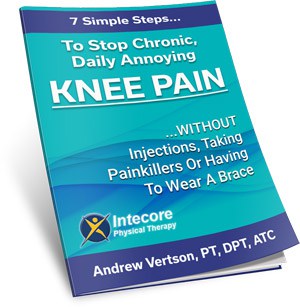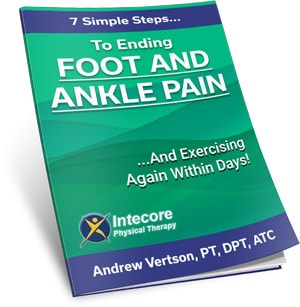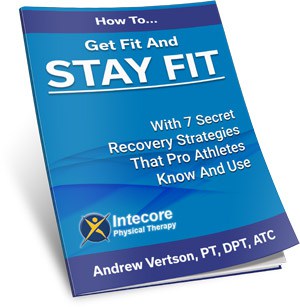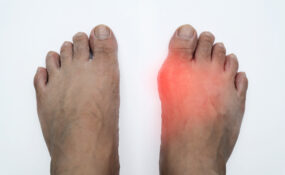
Wondering what might be the causes of back spasms? Imagine this: You’re bending over to pick up something off the floor, and suddenly, there’s a sharp, seizing pain in your back – a muscle spasm. It’s a scenario we at our clinic hear often. As the owner of a physical therapy clinic, I’ve seen countless patients walk through our doors, clutching their lower backs, looking for relief from these sudden, painful contractions. Understanding what causes back spasms is the first step to effectively treating them and, more importantly, preventing them from recurring.
Back spasms can be more than just a temporary nuisance; they can significantly impact your daily life, restricting movement and causing ongoing discomfort. In this blog, we’ll explore the common triggers of back spasms and delve into effective treatment strategies, combining our clinical expertise and the latest research to offer you comprehensive care advice.
More Posts Like This From Intecore:
Can My Lower Back Pain Be Cured?
The Dangers Of Poor Posture
What Is Spinal Stenosis, And How Can I Get Relief?
Table of Contents
Understanding Back Spasms
To address the concern of “What causes back spasms?” let’s first break down what they are, their symptoms, and the potential causes.
A back spasm is a sudden, involuntary contraction or tensing of the muscles in the back. It can occur in any area of the back, though it’s most common in the lower back. These spasms can vary in intensity and duration, ranging from mild discomfort to severe pain that can be debilitating.
Symptoms of Back Spasms
- A sudden onset of pain in the back.
- A feeling of tightness or cramping in the back muscles.
- Difficulty moving or bending.
- Pain that worsens with movement.
- In some cases, the pain may radiate to other areas, such as the legs.
Potential Causes of Back Spasms
- Muscle Strain: Often, back spasms are the result of a muscle strain or overexertion, such as lifting heavy objects incorrectly or engaging in strenuous physical activity without proper warm-up.
- Underlying Medical Conditions: Conditions like arthritis, degenerative disc disease, or spinal stenosis can also lead to back spasms as the body tries to stabilize these areas.
- Poor Posture: Sitting or standing in an improper posture for extended periods can put undue stress on the back muscles, leading to spasms.
- Stress and Tension: Emotional stress can manifest physically, causing muscles, including those in the back, to tighten and spasm.
- Lack of Exercise: Weak abdominal and back muscles due to inactivity can increase the risk of spasms as these muscles are unable to adequately support the spine.
Next, we’ll delve into effective treatment strategies and how you can manage this condition for better quality of life.
Diagnosing Back Spasms
The first step in diagnosing back spasms is a thorough medical evaluation. This typically involves:
- Medical History Review: Your doctor or physical therapist will ask about your symptoms, medical history, any recent injuries, and activities that may have triggered the spasms.
- Physical Examination: A physical exam will be conducted to assess the range of motion, muscle strength, nerve function, and areas of pain and tenderness in the back.
- Discussion of Symptoms: You’ll be asked to describe your symptoms in detail, including the severity of the spasms, their frequency, and any activities that alleviate or worsen the pain.
In some cases, further diagnostic tests may be necessary to pinpoint the exact cause of the back spasms or to rule out other conditions. These tests might include:
- X-rays: These can help identify any structural issues with the bones in the spine.
- MRI or CT Scans: These imaging tests provide a more detailed view of the soft tissues, muscles, nerves, and discs in the back.
- Electromyography (EMG): This test measures the electrical impulses in the muscles and can help detect nerve or muscle damage.
Treating Back Spasms with Physical Therapy
Physical therapy for back spasms typically includes a combination of techniques and exercises designed to reduce pain, improve mobility, and strengthen the back muscles. These may include:
- Stretching Exercises: Gentle stretching can help relieve the tension in the back muscles, increase flexibility, and reduce the risk of future spasms.
- Strengthening Exercises: Building strength in the core and back muscles is key in stabilizing the spine and preventing recurrent spasms.
- Heat and Cold Therapy: Applying heat can relax the muscles and improve blood flow to the affected area, while cold therapy can reduce inflammation and numb sore tissues.
- Massage Therapy: Targeted massage can help loosen tight muscles, relieve pain, and improve blood circulation in the back.
- Posture Education: Learning and maintaining proper posture can reduce unnecessary strain on the back muscles and spine, preventing future spasms.
- Pain Management Techniques: Physical therapists can also teach pain management techniques, such as deep breathing and relaxation exercises, to help manage the discomfort caused by spasms.
In addition to physical therapy, other non-surgical treatments can be beneficial in managing back spasms. These may include:
- Lifestyle Modifications: Simple changes in daily activities and ergonomics can significantly impact the frequency and severity of back spasms. This includes proper lifting techniques, regular physical activity, and avoiding prolonged sitting.
- Alternative Therapies: Some patients find relief through alternative therapies like acupuncture and yoga, which can complement physical therapy.
Preventing Back Spasms
Prevention is key to maintaining a healthy back and avoiding the discomfort and inconvenience of these painful contractions. Let’s explore effective strategies to prevent back spasms, focusing on proper posture, body mechanics, strengthening exercises, and flexibility.
Proper Posture and Body Mechanics
Maintaining good posture and using correct body mechanics play a crucial role in preventing back spasms. Here are some tips:
- Sitting: Keep your feet flat on the floor and use a chair that supports your lower back. Avoid slouching and take regular breaks to stand and stretch.
- Standing: Keep your weight evenly distributed on both feet, and avoid locking your knees.
- Lifting: Always bend at the knees and lift with your legs, not your back. Keep the load close to your body and avoid twisting while lifting.
Strengthening Exercises
Strengthening the core and back muscles is vital in preventing back spasms. A strong core supports the spine, reducing the strain on the back muscles. Incorporate exercises like planks, bridges, and abdominal crunches into your routine.
Stretching and Flexibility Exercises
Flexibility is another important aspect of back health. Regular stretching can keep your muscles supple and reduce the risk of spasms. Focus on stretches that target the back, hips, and hamstrings. Gentle yoga or Pilates can also be beneficial in improving flexibility and reducing muscle tension.
Get Your Free Back Pain Guide
The health of your back is vital to your overall quality of life. By adopting the right posture, engaging in strengthening and flexibility exercises, and being mindful of your body mechanics, you can keep your back strong and healthy.
If you’re currently struggling with back pain or spasms, know that you’re not alone, and there are resources available to help you on your journey to recovery. As part of our commitment to your health and wellness, we invite you to download our free back pain guide. This comprehensive resource is packed with information, tips, and exercises designed to help you understand and alleviate your back pain.
Don’t let back spasms control your life. Take the first step towards a pain-free back by downloading our free guide today. Click here to get your copy and start your journey to a healthier, happier back.
- What Is Gout? Why It Happens and What You Can Do About It - November 17, 2025
- 3 Essential Back-Saving Tips You MUST Know Before Any Workout - November 14, 2025
- Are You Experiencing Shoulder Pain from Sleeping Wrong? - October 21, 2025












